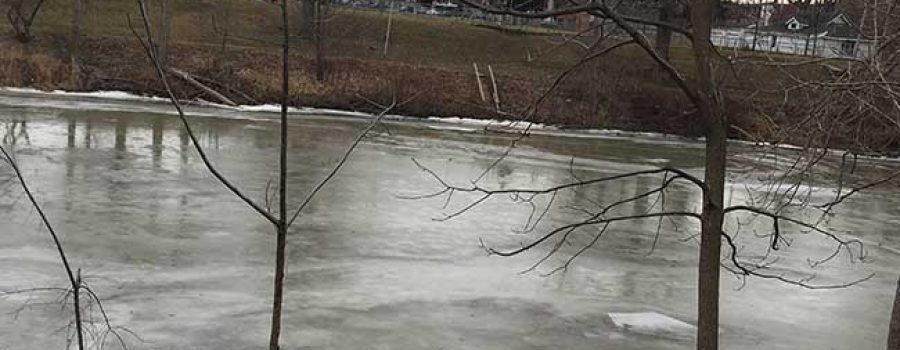Date: 10:30 A.M., Tuesday, February 2, 2016
Issued to: Municipal Flood Coordinators of Municipalities, Media
Issued by: Lower Thames Valley Conservation Authority
Over the last few days the Thames River watershed has experienced unseasonably high temperatures with average daily temperatures over 5⁰C and daytime highs around 10⁰C. Snow surveys conducted before the warm up indicated 30-35 mm of water equivalent in the snowpack of the north and 5-15 mm in the south of the Upper Thames. The high temperatures have caused the snow to melt and to release this water and water levels on the Thames River have risen in response. Snow surveys yesterday indicated the snow has mostly all melted out of the south with 10-15 mm of water equivalent remaining in the northerly areas of the watershed. Rainfall for this evening and overnight are calling for 20-25 mm of rain with the continuation of high temperatures into tomorrow.
The predicted rainfall for this evening and overnight is expected to add to the elevated water levels already being seen in the Thames River due to the snowmelt. Water levels could raise enough to flood the low lying river flats areas adjacent to the Thames River from Delaware, beginning overnight, and making their way down to Thamesville over the next couple of days. After the peak flows pass, water levels should be expected to remain high throughout the rest of the week. While there is ice cover on the Thames River, it has not accumulated a significant thickness, and therefore large ice jamming events are not expected. However, localized ice jam events could occur and would be expected to be limited to the low lying areas previously mentioned.
The predicted 20-25 mm of rainfall can be a significant amount for the local watersheds in the winter when snow and frozen ground conditions exist. With only limited snow in the Lower Thames watershed and the recent high temperatures, the impact of this rainfall may not be as severe. Local drainage ditches and watercourse are expected to rise and may spill their banks. Although the LTVCA does not expect to have to operate, the Indian-McGregor Creek Diversion Channel, there is still some uncertainty and staff will be monitoring conditions closely.
People should take extra caution and avoid the river, lakes, ditches, streams, and ponds. Ice conditions are expected to degrade and a combination of slippery banks, moving/melting ice and cold water is particularly dangerous. Children, pets and livestock should be kept away from the water.
Officials will continue to monitor the situation and update this advisory if necessary.
This message will be in effect until February 4th, 2016.
Contact: Jason Wintermute ([email protected], 519-354-7310 x227) regarding this message.

